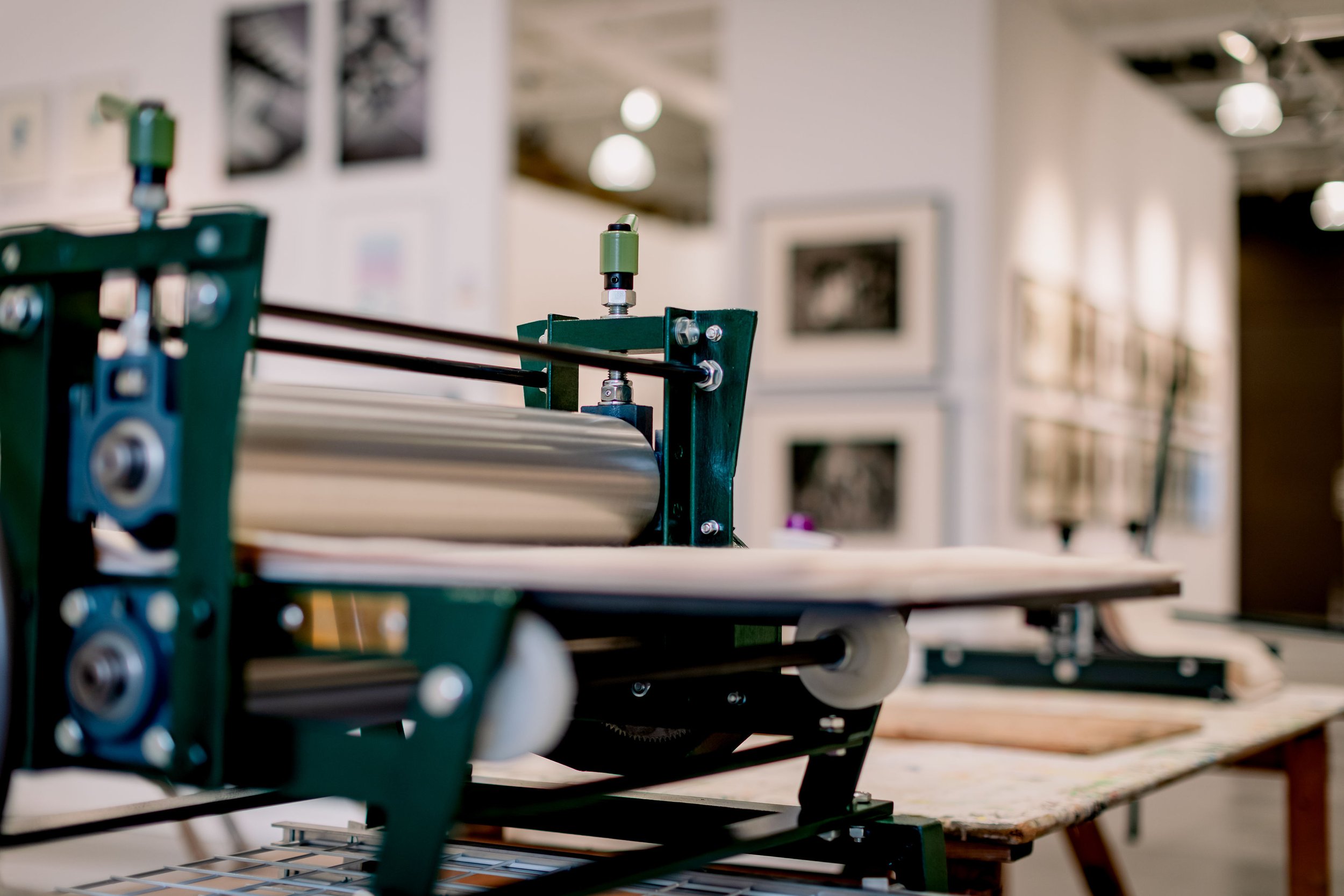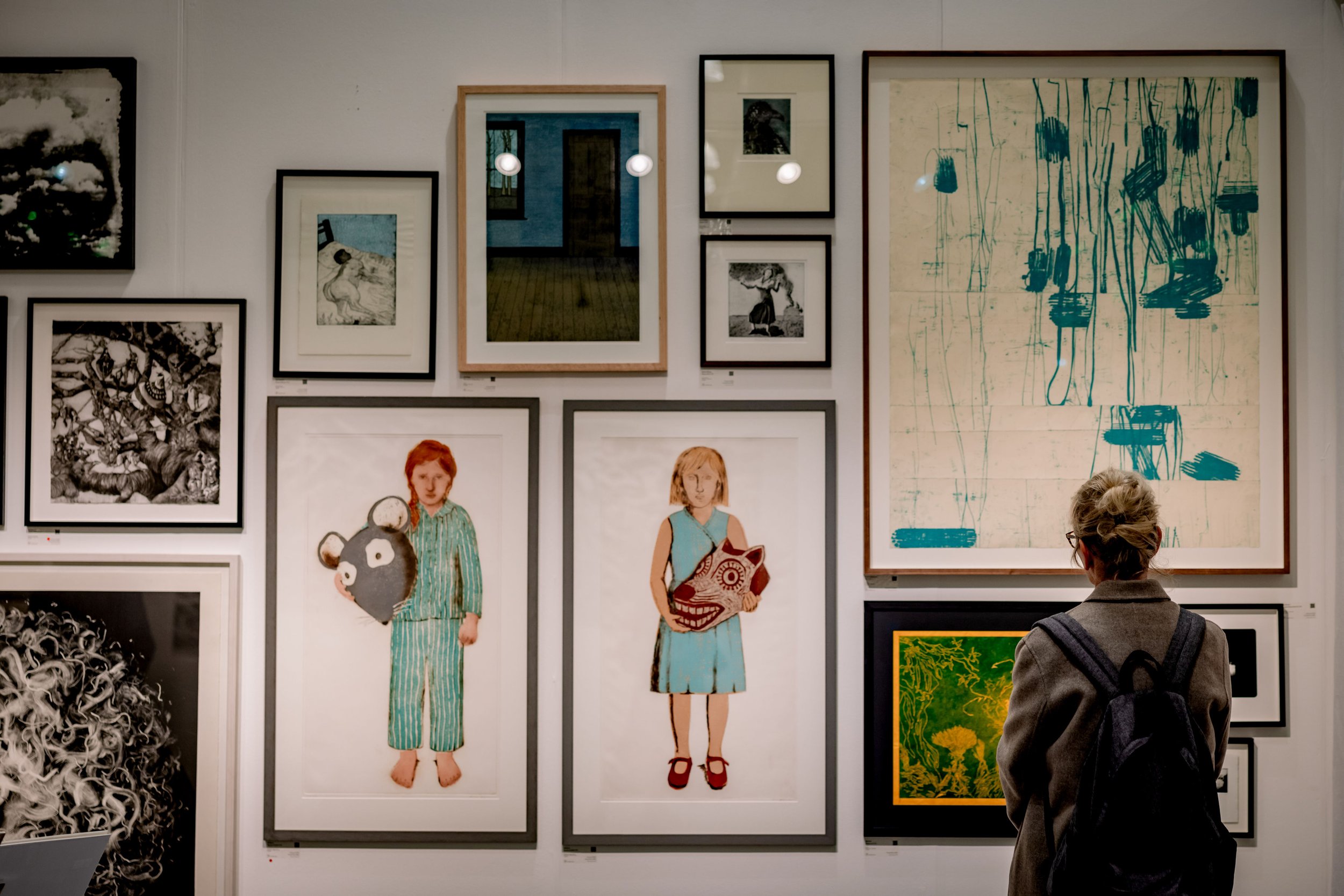
What is an iNTAGLIO PRINT?
Intaglio printing uses various methods of 'cutting' an image onto the surface of a metal plate. Once the plate is inked, the incised lines hold the ink whilst the rest of the plate is wiped clean. The plate, in contact with damp paper, is passed through a roller press under pressure. The paper is forced into the sunken areas to receive the ink.The inked lines on the finished surface are often slightly raised and there is generally a visible line around the image where the plate has been pressed into the paper, called the platemark. The presence of a platemark is a good way of telling an intaglio print from a relief or planographic print. Engraving, etching, drypoint, carborundum, aquatint and mezzotint are the most common types of intaglio printmaking. Many printmakers combine different intaglio techniques when they work on their plates and for this reason it is not unusual to see a contemporary print described simply as intaglio.
Process
Plate Preparation: The intricate design is either incised into the plate through techniques such as engraving or drypoint, or it is etched using various methods involving acid or photochemical processes.
Inking: A carefully formulated oily etching ink is generously applied across the entire surface of the plate, ensuring that every groove and recess is thoroughly filled for optimal transfer of the image.
Wiping: The surface of the plate is meticulously wiped clean, ensuring that only those recessed areas remain charged with ink, while the flat areas of the plate are left free of any excess ink.
Printing: The prepared plate is precisely positioned on the press, and a specially soaked and blotted paper is placed directly on top of it. Multiple layers of blankets are thoughtfully arranged over the paper to apply even pressure and help push it into the intricate grooves. The plate, along with the layered setup, is then passed through the press under high pressure.
Result: The ink effectively transfers from the recessed areas onto the paper, resulting in a highly detailed and striking print that captures all the nuances of the original design.








